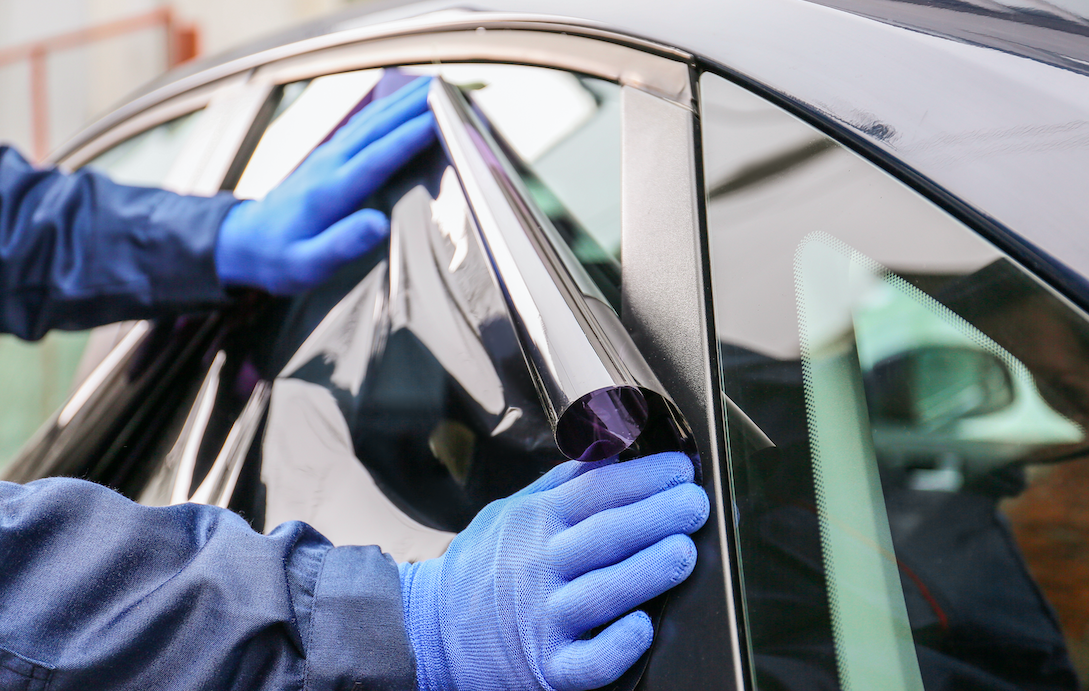Your Comprehensive Guide to Do It Yourself Home Window Tinting: Tips and Techniques
Embarking on a DIY window tinting job presents a chance to boost both the performance and looks of your area. Prior to getting started on this endeavor, it is vital to browse the intricacies of local tinting policies and choose a suitable film that straightens with your objectives.
Comprehending Window Tinting Regulations
Navigating the elaborate landscape of window tinting regulations is essential for any DIY lover looking for to improve their lorry's appearances and comfort. Each state in the united state has certain policies regarding the allowable degrees of tint on different home windows, which can considerably impact your decision-making procedure.
Typically, these legislations dictate the maximum permitted Noticeable Light Transmission (VLT) percent, which refers to the quantity of light that can travel through the colored home windows. For instance, some states permit just a particular percent of color on the front windscreen, while enabling darker shades on rear windows. Conformity with these policies is crucial, as failure to adhere can result in fines or the demand to get rid of the color entirely.
In addition, there are usually differences between guest vehicles and commercial automobiles, with various guidelines putting on each group. It's suggested to consult your neighborhood Department of Electric motor Vehicles or comparable authority to gather accurate information customized to your place. Understanding these legislations not only ensures legal compliance however additionally boosts security by maintaining visibility and stopping possible threats while driving.

Selecting the Right Color Movie
Choosing the suitable tint film is a crucial action in the do it yourself window tinting process, as it straight affects both the appearance and capability of your vehicle's windows. Several factors need to direct your selection, including the kind of film, its legal compliance, and your preferred results.
First, think about the various types of color movies offered: dyed, metalized, ceramic, and crossbreed. Metalized films offer enhanced warmth rejection and longevity yet can interfere with electronic signals.
Following, ensure that the film follows neighborhood regulations worrying visible light transmission (VLT) percents. Compliance with these regulations is essential to stay clear of fines and make sure safety.
Crucial Devices for DIY Tinting
Having selected the appropriate color film for your home windows, the following step entails collecting the necessary devices to ensure a successful installation. The key tools you will certainly require consist of an energy blade or a razor blade, which is crucial for reducing the color film to the preferred dimension. A squeegee is her response additionally essential, as it assists get rid of air bubbles and ravel the film throughout application.
Along with these primary tools, a spray bottle full of soapy water will assist in developing a workable surface area for the color movie, allowing for adjustments before it adheres completely. A gauging tape makes sure exact measurements for cutting the browse around this web-site movie accurately, while a soft cloth or lint-free towel is very important for cleaning the glass surface area prior to application.
Moreover, consider making use of a warmth gun or hairdryer, as this can aid mold and mildew the tint movie to the contours of the window and assist in adherence. Lastly, gloves are recommended to prevent fingerprints on the film throughout setup. By collecting these vital devices, you will be well-prepared to tackle your DIY window tinting project successfully.
Step-by-Step Application Refine
Begin by thoroughly cleansing the window surface area to make sure optimal bond of the tint movie. Use a glass cleaner and a lint-free cloth to get rid of any kind of dirt, dirt, or grease. As soon as the home window is tidy, gauge the color film against the window, enabling a mild overlap on all sides. Cut the film accordingly with a sharp energy blade for a specific fit.
Following, prepare a service of water and a couple of drops of child shampoo in a spray container. Gently spray the window surface and the glue side of the film. This option will certainly permit repositioning during application. Thoroughly align the movie with the top of the window, ensuring it is straight. Press the film versus the glass, beginning from the center and functioning external to remove air bubbles. Use a squeegee to smooth the film, applying company, even stress.
Enable the tint to treat for at least 24 hours without rolling down the home windows. Comply with these steps carefully for ideal results in your Do it yourself window tinting project.
Maintenance and Care Tips
Correct maintenance and treatment of your window color is vital to guarantee its durability and performance. To start with, stay clear of making use of rough cleaners or harsh materials when cleansing colored home windows. Rather, select a gentle, ammonia-free cleaner and a soft microfiber cloth to stop scrapes and peeling.
It's recommended to wait at least a week after installation prior to cleaning your windows to allow Click This Link the sticky to completely heal. Throughout this preliminary duration, prevent rolling down the home windows to avoid any damage to the tint.
Normal upkeep entails inspecting the edges of the tint for any type of indications of gurgling or lifting (Window Tinting Folsom). If you observe any type of concerns, it's best to resolve them quickly to prevent further damage. Additionally, beware with the usage of window treatments, such as shades or curtains, as they can create warmth that may compromise the tint in time

Conclusion
Finally, embarking on a DIY window tinting project demands careful consideration of neighborhood laws, option of suitable tint movies, and the application of essential devices. A systematic application process guarantees optimum outcomes, while normal upkeep contributes to the long life of the tint. By sticking to these guidelines, individuals can accomplish both visual improvement and enhanced personal privacy in their rooms, making DIY window tinting a beneficial endeavor.